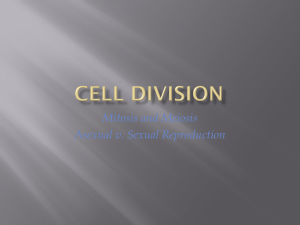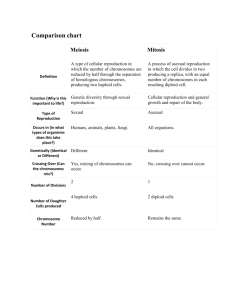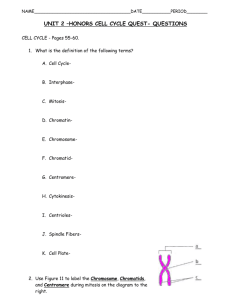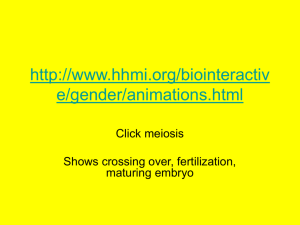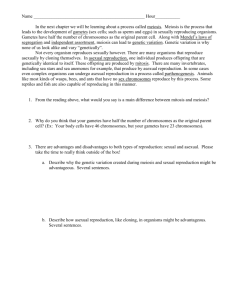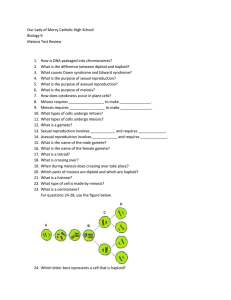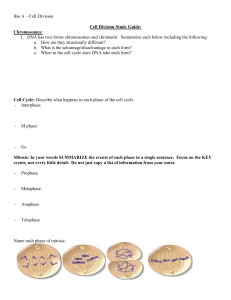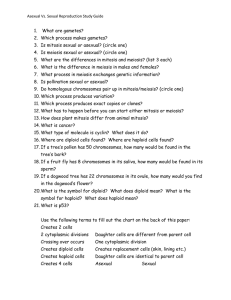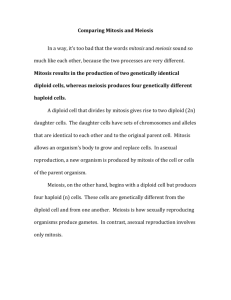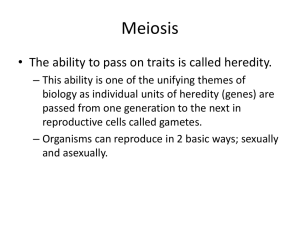Objectives: Cell Division and Reproduction: Which cell structures
advertisement
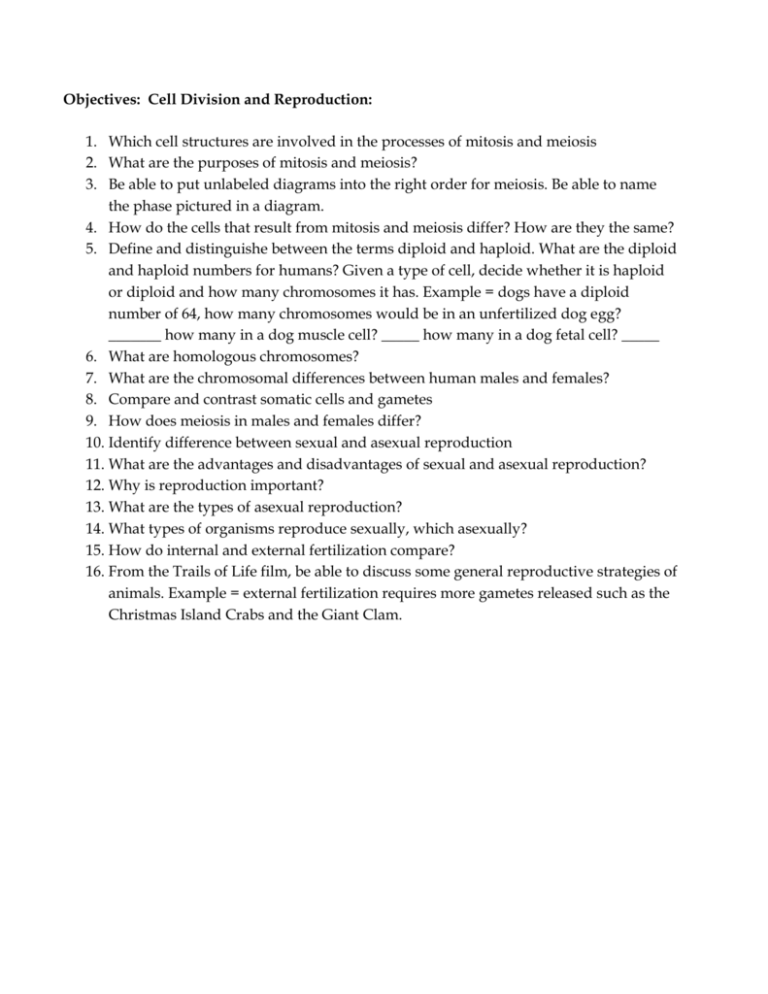
Objectives: Cell Division and Reproduction: 1. Which cell structures are involved in the processes of mitosis and meiosis 2. What are the purposes of mitosis and meiosis? 3. Be able to put unlabeled diagrams into the right order for meiosis. Be able to name the phase pictured in a diagram. 4. How do the cells that result from mitosis and meiosis differ? How are they the same? 5. Define and distinguishe between the terms diploid and haploid. What are the diploid and haploid numbers for humans? Given a type of cell, decide whether it is haploid or diploid and how many chromosomes it has. Example = dogs have a diploid number of 64, how many chromosomes would be in an unfertilized dog egg? _______ how many in a dog muscle cell? _____ how many in a dog fetal cell? _____ 6. What are homologous chromosomes? 7. What are the chromosomal differences between human males and females? 8. Compare and contrast somatic cells and gametes 9. How does meiosis in males and females differ? 10. Identify difference between sexual and asexual reproduction 11. What are the advantages and disadvantages of sexual and asexual reproduction? 12. Why is reproduction important? 13. What are the types of asexual reproduction? 14. What types of organisms reproduce sexually, which asexually? 15. How do internal and external fertilization compare? 16. From the Trails of Life film, be able to discuss some general reproductive strategies of animals. Example = external fertilization requires more gametes released such as the Christmas Island Crabs and the Giant Clam.




